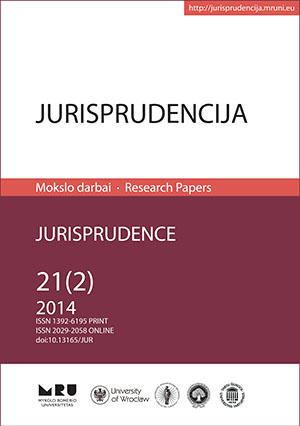Selected Problems of Implementation of the Espoo Convention in Ukraine (On the Example of Bystroe Canal Case)
Selected Problems of Implementation of the Espoo Convention in Ukraine (On the Example of Bystroe Canal Case)
Author(s): Victoria RachynskaSubject(s): Law, Constitution, Jurisprudence
Published by: Mykolas Romeris University
Keywords: environment impact assessment; significant adverse transboundary impact; the Espoo Convention; the Implementation Committee of the Espoo Convention; the Bystroe Canal Case
Summary/Abstract: The Convention on Environmental Impact Assessment in a Transboundary Context (the Espoo Convention) stipulates that in case of authorizing a proposed activity that is likely to cause a significant adverse transboundary impact on the environment of a Party/ Parties of the Convention, the Party, under jurisdiction of which a proposed activity is planned, shall provide the affected Party/ Parties with an opportunity to participate in the authorization of this activity. Even though the Convention was ratified by Ukraine as early as in 1999, it failed to undertake the necessary legal, administrative or other measures to implement its provisions. Ukraine is not the only state being in non-compliance with the Convention. However, it may be considered as one of the most persistent violators of its obligations pursuant to the Convention. In particular, in the example case study concerning the Bystroe Canal Project, Ukraine violated Article 2, paragraph 3; Article 3, paragraph 2, 5(a) and 8; Article 4, paragraph 2; Article 5; Article 6, paragraph 1 and 2 of the Espoo Convention, and it did not comply with the recommendations of the Meeting of the Parties of this Convention. Even though the Meeting of the Parties to the Espoo Convention issued a caution to become effective to the Government of Ukraine in order to urge it to comply with the relevant provisions of the Espoo Convention, Ukraine did not fulfill its obligations under the Convention. Namely, works regarding the Bystroe Canal Project authorized with the violations of the Espoo Convention were continued.In response to the request of the Meeting of the Parties to the Espoo Convention, Ukraine adopted a strategy on implementation of the Espoo Convention into Ukrainian legislation. However, recent changes in the legislation on the development control have not satisfied the strategy. Thus, the Ukrainian government was just imitating compliance with the Espoo Convention in order to try to avoid imposing sanctions. Unfortunately, even though the persistent noncompliance was quite obvious, due to inherently soft character and rather political nature of the recommendations of the Meeting of the Parties to the Espoo Convention, it is almost impossible to compel the party of the Convention to follow its provisions. Furthermore, the lack of political will to implement the Espoo Convention, insufficient level of democracy and economic problems faced by Ukraine complicate the situation even more. However, in this uneasy transitional situation efforts made by Ukrainian civil society as well as by the international community in order to bring Ukraine into compliance with universally recognized norms and standards are even more valuable.
Journal: Jurisprudencija
- Issue Year: 21/2014
- Issue No: 2
- Page Range: 399–420
- Page Count: 22
- Language: English

